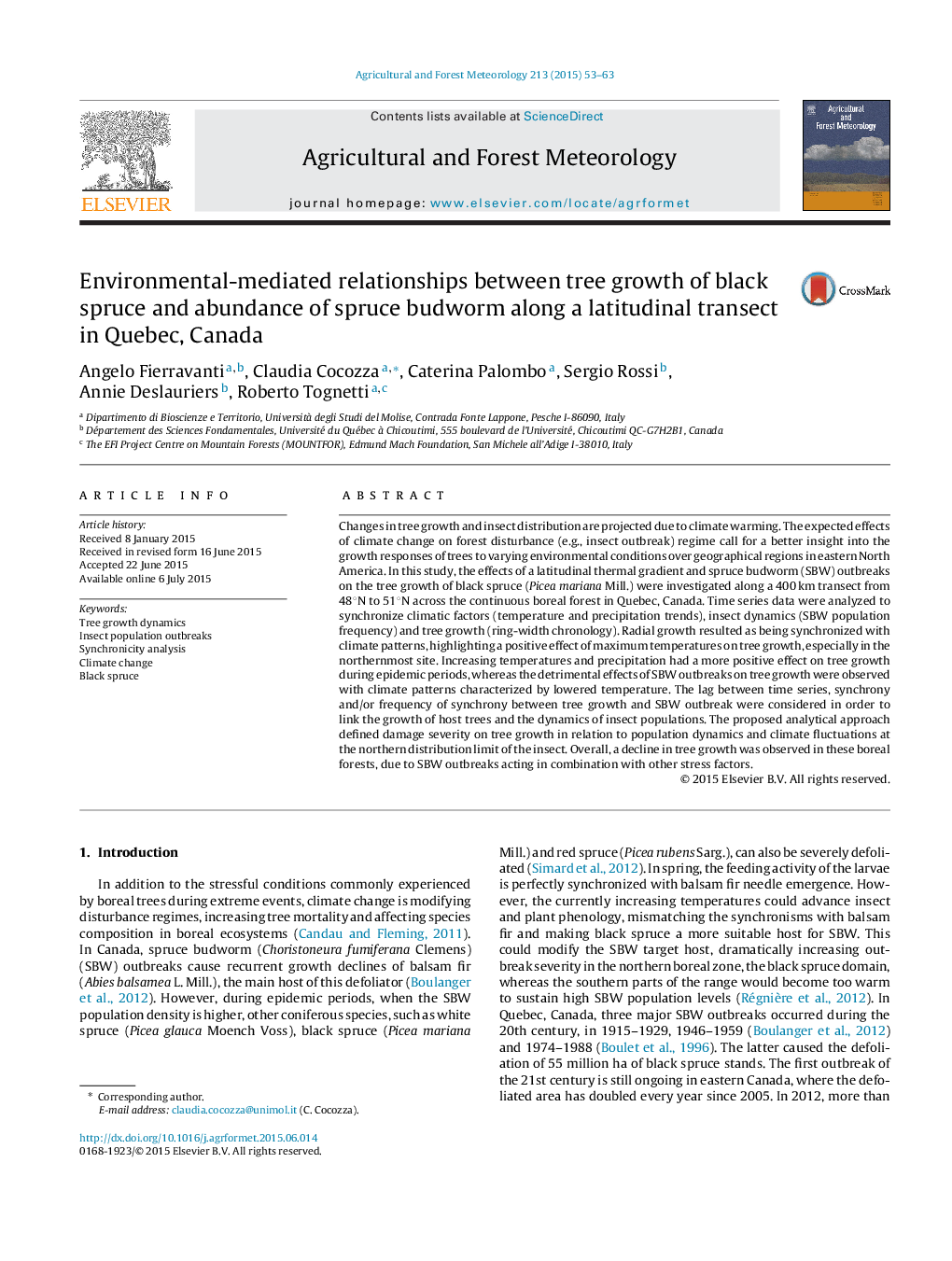| کد مقاله | کد نشریه | سال انتشار | مقاله انگلیسی | نسخه تمام متن |
|---|---|---|---|---|
| 81505 | 158320 | 2015 | 11 صفحه PDF | دانلود رایگان |
• The radial growth was synchronized with climate patterns.
• Maximum temperatures positively affected the growth of trees in the northernmost site.
• Increasing temperatures and precipitation influenced tree growth in the outbreak intervals.
• Synchronicity of time series ed lags between tree growth and SBW outbreaks.
• Increased radial growth decreased the susceptibility of black spruce to SBW outbreaks.
Changes in tree growth and insect distribution are projected due to climate warming. The expected effects of climate change on forest disturbance (e.g., insect outbreak) regime call for a better insight into the growth responses of trees to varying environmental conditions over geographical regions in eastern North America. In this study, the effects of a latitudinal thermal gradient and spruce budworm (SBW) outbreaks on the tree growth of black spruce (Picea mariana Mill.) were investigated along a 400 km transect from 48°N to 51°N across the continuous boreal forest in Quebec, Canada. Time series data were analyzed to synchronize climatic factors (temperature and precipitation trends), insect dynamics (SBW population frequency) and tree growth (ring-width chronology). Radial growth resulted as being synchronized with climate patterns, highlighting a positive effect of maximum temperatures on tree growth, especially in the northernmost site. Increasing temperatures and precipitation had a more positive effect on tree growth during epidemic periods, whereas the detrimental effects of SBW outbreaks on tree growth were observed with climate patterns characterized by lowered temperature. The lag between time series, synchrony and/or frequency of synchrony between tree growth and SBW outbreak were considered in order to link the growth of host trees and the dynamics of insect populations. The proposed analytical approach defined damage severity on tree growth in relation to population dynamics and climate fluctuations at the northern distribution limit of the insect. Overall, a decline in tree growth was observed in these boreal forests, due to SBW outbreaks acting in combination with other stress factors.
Journal: Agricultural and Forest Meteorology - Volume 213, November 2015, Pages 53–63
